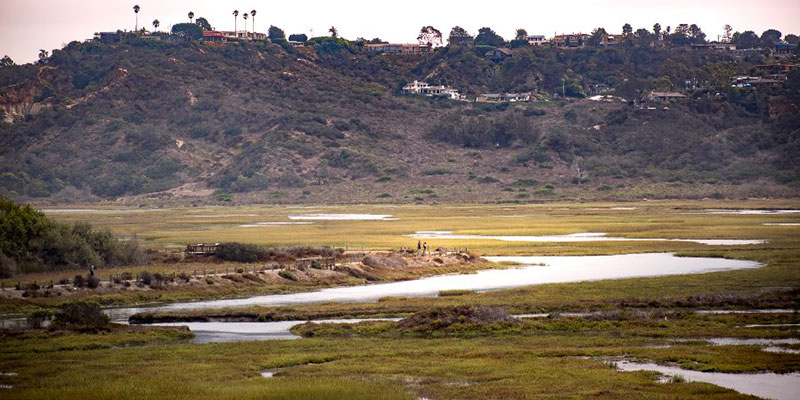With continuing drought conditions bringing water supplies to dangerous levels, the Metropolitan Water District of Southern California has started wa-ter-use restrictions.
Responding to unprecedented water crisis will require a new look at solutions like wastewater reuse and desalination
In April, the Metropolitan Water District of Southern California (MWD) declared its first water emergency due to extremely limited supplies from the northern Sierra mountains. The Emergency Water Conservation Program requires the district’s 6 million residents to limit watering their lawn to one day per week and urges all Southern Californians, even those outside the district, to cut water use by 30%.
A record 17 feet of mountain snow in December did little to abate the state’s deepening drought. The previous three years are expected to go on record as the driest in California history.
MWD General Manager Adel Hagekhalil explained:
This is a crisis. This is unprecedented. We have never done anything like this before and because we haven’t seen this situation happen like this before, we don’t have enough water to meet normal demands.”
MWD Executive Officer Deven Upadhyay warned that if the restrictions fail to reduce water use by 35%, Southern Californians could face more dramatic restrictions in 2023. While high demand is partly responsible for the short supply, climate scientist Park Williams of the University of California Los Angeles explained, “Without climate change, this would not be even close to as bad.”
Responding to California Droughts
California has responded to its increasingly arid conditions with a number of measures to help decrease the strain on natural resources and keep more water on hand. For example, in 2014, Proposition 1 provided $7 billion for large-scale projects, including groundwater storage, a trend that has been growing quickly.
Two other strategies the state is working on are water reuse and desalination. Decentralization makes water reuse and desalination viable on any scale, even in small and remote community water systems. Here are some examples.
Water Reuse
In light of severe water shortage, it doesn’t make sense to use water just once. Cities are responding. For example, Operation Next in Los Angeles is a massive initiative that aims to recycle 100% of the city’s available treated wastewater by 2035. In large municipal operations like this, treated water is put directly into circulation, or used to recharge aquifers and supplement reservoirs.
But water recycling isn’t limited to large, central plants. Wastewater reuse with smaller, decentralized modular plants is coming into its own in the West, allowing scaled treatment in even remote communities.
A good example of plants that can be used for decentralization comes from Fluence’s modular Aspiral™ wastewater treatment line. They rely on energy-saving membrane aerated biofilm reactor (MABR) technology to create a stream of effluent safe for any nonpotable application. Fluence MABR’s nutrient removal is so high that its effluent was approved for agricultural reuse in California after a year-long trial at Stanford University.
Desalination
Until recently, desalination projects tended to be large, regional plants, which often face impediments due to their scale and ecological concerns. For example, Orange County’s proposed Poseidon desalination plant in Huntington Beach was rejected in May after a quarter-century of studies and negotiations.
While huge projects like Poseidon frequently run into regulatory and political complications, California remains open to desalination. One way to avoid the difficulties of projects involving many competing interests and jurisdictions is to keep it local with decentralized desalination, placing smaller plants at the point of need. Brine diffusion may be less ecologically problematic on smaller scales, and small-scale desalination has the potential to save many communities throughout the West.
For coastal regions or those with access to brackish aquifers, small, modular desalination units such as Fluence’s containerized NIROBOX™ units, can help supply more potable water.
Where options are limited for initial financing and long-term plant operation costs, Fluence’s Water Management Services provides plants with no upfront investment through flexible PPP, BOO, and BOOT financing structures. Clients only pay for the treated water and Fluence takes care of the construction and maintenance of the plant. Contact Fluence to learn more.

